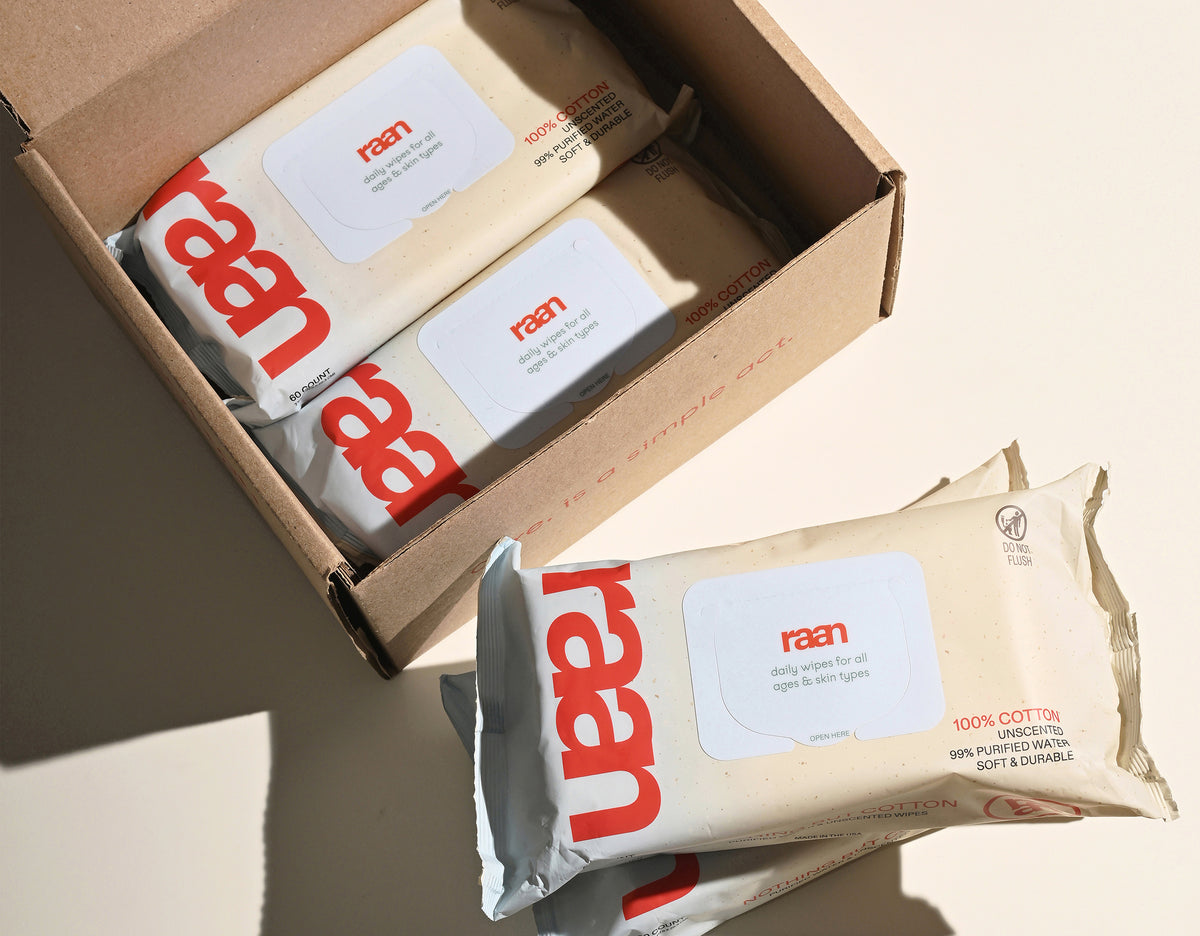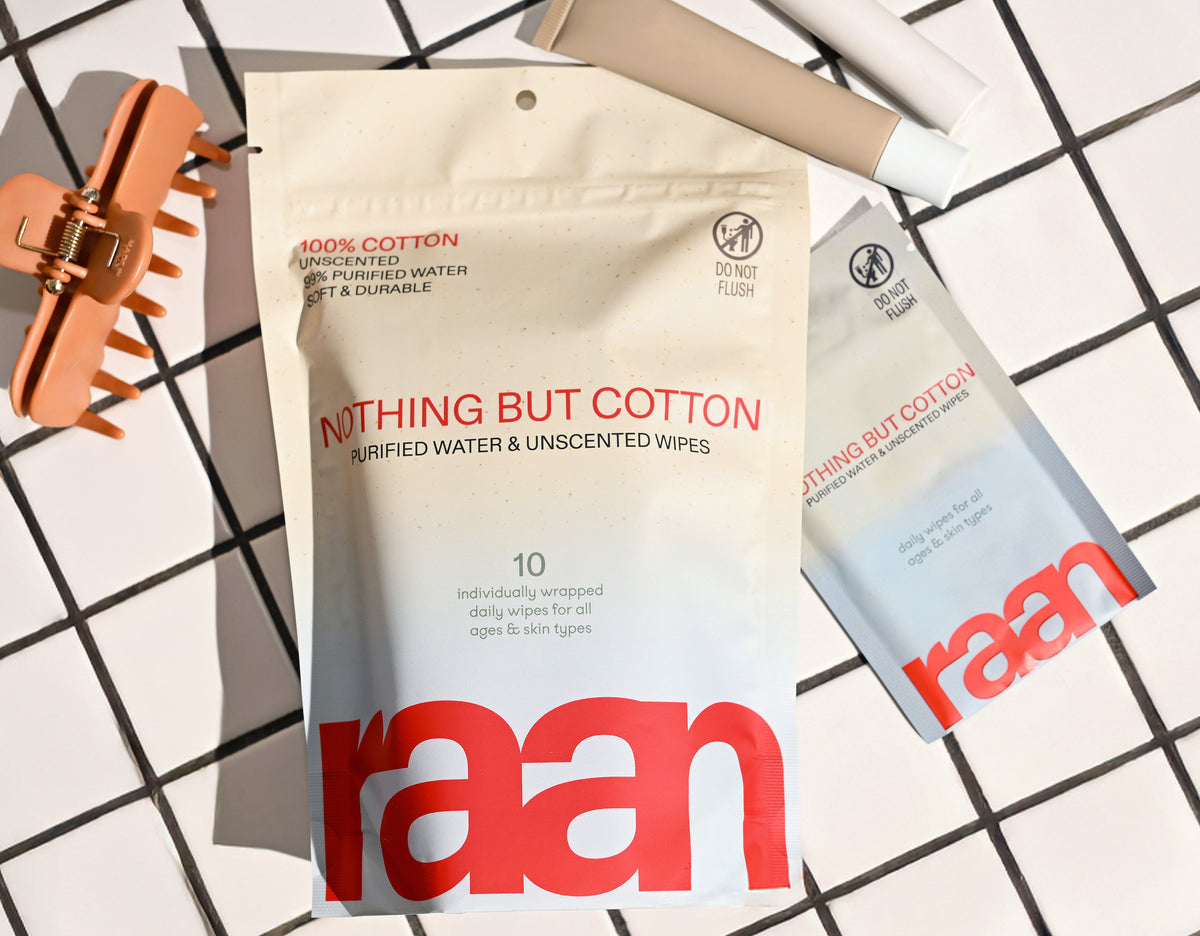Key Takeaways
- "Baby wiped" involves using gentle, water-based wipes initially created for diaper changes.
- These wipes are designed to be soft and safe for a baby's sensitive skin.
- Baby wipes have evolved into versatile cleaning tools used for various everyday messes.
- They are commonly used beyond the nursery, including for sticky fingers and makeup touch-ups.
Table of Contents
Baby Wiped Essentials: Function, Safety & Real Use
When it comes to keeping your baby clean and comfortable, choosing the right wipe is essential. For parents seeking the safest and gentlest option, unbleached, 100% cotton baby wipes for sensitive skin offer a pure and effective solution. These wipes are designed to minimize irritation and provide peace of mind during every diaper change.
For on-the-go messes, especially when you need a compact and convenient option, the unbleached, 100% cotton pocket wipe for sensitive skin is a smart addition to any diaper bag or purse. Its individually wrapped design ensures freshness and portability wherever you are.
What Does "Baby Wiped" Really Mean?
The phrase "baby wiped" refers to the use of gentle, water-based wipes originally developed for diaper changes but now embraced for a wide range of cleaning needs. Parents and caregivers rely on these wipes for their softness, safety, and versatility. If you're curious about the evolution and science behind these products, you can learn more in this in-depth baby wipes blog that explores their history and modern uses.
Anatomy of a Modern Baby Wipe

Core Materials (And Why Unbleached Cotton Matters)
The foundation of any wipe is its material base, and the differences run deeper than texture. Most conventional wipes use viscose or pulp blends, processed materials that feel soft but break down easily when wet. Plastic-based wipes offer durability but create microplastic concerns and struggle with biodegradability.
Unbleached, 100% cotton represents a different approach entirely. Cotton fibers maintain strength when saturated, providing thorough cleaning without tearing or leaving lint behind. The unbleached aspect matters because it skips harsh chemical processing, preserving the cotton's natural pH balance and eliminating potential irritants that bleaching introduces. For a deeper dive into the benefits of this material, see this unbleached cotton blog.
Ingredient Truths, The Science of Simplicity
Every ingredient in a quality baby wipe serves a specific purpose. Purified water forms 99% of most formulations, acting as the primary cleaning agent. Food-grade preservatives like sodium benzoate and potassium sorbate prevent harmful bacteria growth without synthetic chemicals. Skin-conditioning agents like ethylhexylglycerin maintain moisture balance, while organic aloe provides natural soothing properties.
| Ingredient Category | In Raan Wipes | Purpose | What We Skip |
|---|---|---|---|
| Base | 99% purified water | Primary cleaning agent | Alcohol, harsh solvents |
| Preservatives | Food-grade sodium benzoate | Prevent bacteria growth | Synthetic preservatives |
| Conditioning | Organic aloe | Moisturize and soothe | Artificial fragrances |
| Material | Unbleached 100% cotton | Gentle, strong cleaning | Plastic fibers, bleach |
Safety Standards & Certifications That Matter
EWG Verified certification requires rigorous testing of every ingredient against the Environmental Working Group's database of over 80,000 chemicals. This third-party verification ensures each component meets strict safety thresholds for reproductive health, developmental concerns, and skin sensitivity. Unlike self-proclaimed "natural" labels, EWG Verified demands transparent ingredient disclosure and scientific backing. To understand why this matters, check out this EWG Verified blog.
Additional certifications like Cruelty-Free and Women Owned provide context about manufacturing ethics and business practices. The Natural Cotton Seal specifically verifies that cotton materials meet organic standards without synthetic pesticide residues, crucial for products touching sensitive skin daily.
Practical Uses for Baby Wipes (For Every Real Mess)
Everyday Scenarios, Beyond the Changing Table
Baby wipes have evolved into versatile cleaning tools used for various everyday messes. Whether you're cleaning sticky hands after a snack, wiping down surfaces, or freshening up on the go, these wipes are indispensable. For families who need a convenient solution for every situation, the mess-ready pack provides a curated selection to tackle life's unpredictable spills and smudges.
Choosing the Right Wipe: For You, Your Baby, and the Planet
Understand Your Skin Needs, Sensitive, Newborn
When selecting wipes, it's important to consider your baby's unique skin needs. Sensitive and newborn skin requires extra care, so opt for products that are free from harsh chemicals and fragrances. If you're just starting out and want a comprehensive set, the starter set is a great way to try different options and find what works best for your family.
Baby Wiped vs. Other Wipes: Direct Comparison, Real Choices

Understanding the baby wiped landscape requires comparing materials, formulations, and intended uses across different categories. Each type serves specific needs, but the differences in safety standards and gentleness are significant.
| Wipe Type | Primary Material | Water Content | Preservative Type | Best For |
|---|---|---|---|---|
| Premium Baby Wipes (Raan) | Unbleached 100% cotton | 99%+ purified water | Food-grade only | Newborns, sensitive skin, daily use |
| Standard Baby Wipes | Viscose/pulp blend | 95-98% water | Mixed preservatives | General baby care |
| Adult Wet Wipes | Synthetic fibers | 85-95% water | Synthetic preservatives | Surface cleaning, adult hygiene |
| Makeup Wipes | Polyester/cotton blend | 70-85% water | Various + cleansing agents | Makeup removal only |
Hypoallergenic varieties undergo additional testing but aren't regulated by FDA standards, look for third-party certifications instead. Fragrance-free options eliminate a common irritant, while "unscented" products may still contain masking fragrances to hide chemical odors. For more details on regulations and safety, see this FDA resource on disposable wipes.
Lotion-infused wipes contain moisturizing agents that can help prevent dryness but may cause reactions in sensitive individuals. Water-based formulations offer the gentlest approach, relying on mechanical cleaning action rather than chemical agents.
Troubleshooting: When "Baby Wiped" Goes Wrong
Skin Irritation, Allergic Reactions, Diaper Rash
Redness, bumps, or persistent irritation after using wipes signals sensitivity to an ingredient. Stop use immediately and cleanse the area with plain water. Pat dry gently and allow air exposure before applying any treatments. Contact a pediatrician if symptoms persist beyond 24 hours or worsen. For additional information on baby wipe safety issues, you can review this external guide on baby wet wipes safety.
To test new wipes safely, use one wipe on a small skin area (like the inner forearm) and wait 24 hours before full use. This patch test reveals sensitivities before they affect larger areas. When ready to retry wipes after a reaction, choose products with fewer ingredients and verified safety testing.
Frequently Asked Questions
What are the benefits of using unbleached, 100% cotton baby wipes compared to conventional wipes?
Unbleached, 100% cotton baby wipes avoid harsh chemical processing, preserving the natural pH balance of the fibers and reducing irritation risks. They maintain strength when wet, providing thorough cleaning without tearing or leaving lint behind, unlike many conventional wipes made from processed materials or plastic blends.
How do baby wipes ensure safety and gentleness for a baby's sensitive skin?
Baby wipes designed for sensitive skin use simple, hypoallergenic, and fragrance-free formulas with minimal ingredients. They rely on food-grade preservatives and natural moisturizers like organic aloe to cleanse gently without disrupting the skin’s balance or causing irritation.
In what ways can baby wipes be used beyond diaper changes?
Beyond diaper changes, baby wipes are handy for cleaning sticky fingers, refreshing the face on the go, wiping up spills, and quick touch-ups for makeup or skin. Their softness and gentle formula make them versatile for everyday messes across all ages.
What ingredients are typically avoided in high-quality baby wipes to prevent irritation?
High-quality baby wipes avoid synthetic preservatives, fragrances, bleach, plastic fibers, and harsh chemicals. Instead, they use minimal, EWG-verified ingredients to ensure safety and reduce the chance of skin irritation.






